#cucula
Note
Random question. Which persona charts (or any other Astro placements) highlights a persons strengths, weaknesses, personal development, and path to self improvement?? Thank you.
how to discover your strengths, weaknesses, and how to improve using asteroid persona charts
i smiled when i read "random question" i was like oh boy... they are gonna ask me what my favorite color or type of potato is... NOPE this question is not random at all for this blog. i'm going to work off of what i already have posted (no asteroids discussed after this post will be added after the posted date).
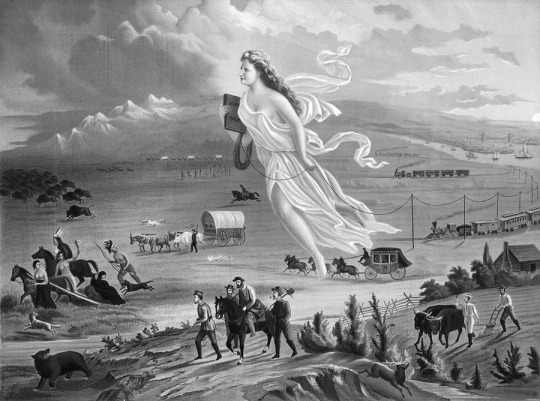
strengths (check the jupiter placement/aspects and sagittarius/pisces ruled houses for the following asteroid persona charts)
abundantia (151): where you are most abundant in life and receive a bunch of gifts while also rewarding others
achaemenides (5126): he had a strong power of will and was capable of perseverance
atalanta (36): strengths/capabilities as a woman - breaking the norms of gender expectations
constantia (315): consistency often breeds success and strengths
hehe (200002): where you have a lot of harmony/positivity in life
heracles (5143): what tasks you completed / will complete because you are strong and determined
hilaritas (996): resilience despite everything around you going poorly
lysistrata (897): leadership qualities and power over a group
themis (24): power and ability to see right from wrong
weakness (check the saturn placement/aspects and capricorn/aquarius ruled houses for the following asteroid persona charts)
achilles (588): a flaw you have that can break you down if not improved upon
cucula (2731): repetition and routine is often a person's greatest weakness (i say this as someone who studied forensic psychology with a lead investigator who works with serial killers)
icarus (1566): a mindset that could lead to your demise
lacrimosa (208): thoughts/experiences that hold you back because you are still upset over them
midas (1981): where your life is set to change from riches to rags because of greed
narcissus (37117): where your selfishness is your weakness/flaw
niobe (71): where you are too cocky and you experience a downfall because of it
tantalus (2102): where your superior mentality holds you back
how to improve (check the jupiter placement/aspects and sagittarius/pisces ruled houses for the following asteroid persona charts)
ambrosia (193): the food of the gods - the more you eat the more immortal you become - the more you act in this area (these areas) the better life gets for you
chiron (2060): he was the wounded healer - if anyone knows about improving it is him
dante (2999): dante journeyed from hell to heaven to be good enough for beatrice - it can show you the improvement(s) you make for others / those you love
eureka (5261): a discovery that can change your life
isis (42): how you can heal
karma (3811): the balancing factor in your life
medusa (149): how you can turn your bad actions around to receive remorse from others
odin (3989) / wodan (2155): what you'd do to learn how to improve
pandora (55): the balance of positives and negatives in your life
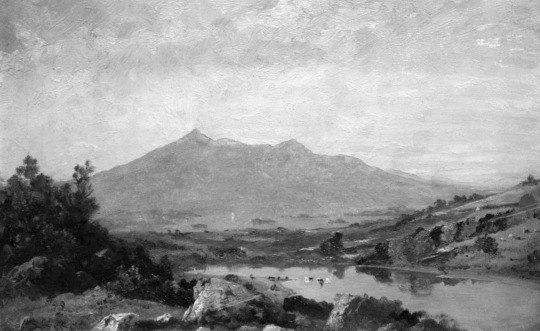
like what you read? leave a tip and state what post it is for! please use my "suggest a post topic" button if you want to see a specific post or mythical asteroid next!
click here for the masterlist
want a personal reading? click here to check out my reading options and prices!
© a-d-nox 2023 all rights reserved
#astrology#astro community#astro placements#astro chart#asteroid astrology#asteroid#natal chart#persona chart#greek mythology#astrology tumblr#jupiter persona chart#abundantia#achaemenides#atalantia#constantia#hehe#heracles#hilaritas#lysistrata#themis#achilles#cucula#icarus#lacrimosa#midas#narcissus#niobe#tantalus#ambrosia#chiron
136 notes
·
View notes
Text
the entire phylogeny of birds from wikipedia + german forenames
Acciforph Acipich Acormes Adianter Aephawks Aephions Aepyormes Aequorph Afriedi Agmaradin Agmonsgan Aliifors Allura Alves Amimormes Amormes Analwi Andgrelies Aniforphae Annatina Ansell Anuel Aptormein Aptormes Aranikar Assel Ausert Austith Austrias Aveserig Batia Beliforste Berta Betelen Beter Betroth Birdt Birko Briasseves Bruarl Brudola Bruths Bucucer Busabirmes Caprichenz Capriegot Cards Cariete Casselmut Cavenin Caverie Cavermes Caves Cavianna Chaeogna Chald Chandarger Chanimoan Chard Chards Charsunbia Cheid Cherin Chert Chric Cland Colaugus Colben Colgert Colinad Collom Coluke Colutzina Conassebke Cophans Coreida Corme Cormes Cralke Cucard Cucaves Cucke Cucula Curea Curikara Curstermes Cypselle Dagle Dagna Dianna Diassan Diformes Dimorith Dormes Duser Eagonigert Edinna Egropaud Eilbert Einse Ekkehawks Ekkeva Elfricorko Eliformes Ellam Elves Emagda Emagles Emalver Emana Emann Emaries Emarogna Emartrid Emiformes Emmar Emmes Emmich Emmiformes Erimort Etarmes Eteptof Ethoos Eucanicas Eucann Euculia Euculin Euracipp Evichawks Eviiformes Falls Falmuel Felfrain Felmut Flaverno Florph Freter Freths Fricarl Frich Frichrika Fricona Frielene Galaude Galdela Gallaf Gards Gaveryl Geben Genan Geonguide Georachae Gerae Gerfornim Geriseb Giformes Giforph Gifts Gothianz Gotscas Gotta Greasse Gredeliega Grenas Grestia Gretersorg Gretheidi Grettaves Griforphae Grimormes Guiformes Guisel Gunola Güntina Haello Hagna Hards Hargeles Harie Harmes Hawks Heimoried Heina Heinad Helhan Heliformes Hellaf Helmul Heniformes Henikt Heraerdin Heranattom Herines Hermes Hernother Herwina Hesterds Hiasse Hiformesl Hifornd Hiforph Hifts Hildel Hilomona Hils Hiolura Hocern Holga Hoodolie Horme Huberyl Humbes Humbirich Hummird Hunthen Ilheretert Ilomarg Imormes Imorphae Irann Irdel Isherfornd Kagusonitz Karalter Karbena Kards Karimormes Karlhelhae Karod Kathormes Katreter Kattos Kiner Kinnallies Kiwin Kladi Klarsuarno Koosterds Lames Larlormes Laves Liforme Lifornher Linse Lipismut Litephae Lomes Lomild Lomona Lonatinger Lormes Lotherich Lumbirds Luther Luthilies Malen Manishonam Manseries Marcust Mards Marianika Mariema Mathondert Maxim Meriel Meserme Mestrud Micolies Miformes Mifornita Miforphar Milia Millina Minfraver Mirds Mirks Monita Morann Mormela Mormes Mormesl Mormesla Mornia Mus-peck Museridie Mustae Neogna Neognam Neogne Neormes Nican Nickolia Niformes Nigiformes Nimorphae Nimuntz Nithoes Nivid Nothae Nottlin Novae Nyctomarl Nyctos Odons Odonsgarl Orphae Osciifowl Ostala Ostob Othoreina Otidaves Otiformes Otimorph Otiner Otingres Otornda Ottamouste Ottel Otter Owleck Owls Palconse Palcossel Palla Palls Palvesl Pards Passer Passowl Pasten Pasthormes Pastibird Pattsch Pedmut Pedrid Petc Phanne Phantz Phard Phardt Pharim Phiformes Phornitz Pickolf Picopoe Pisanna Podietc Podimons Podpethel Potorian Pottormes Psigert Psithoaves Psitta Pterodyna Raete Raine Ramar Rantomed Rathae Rhena Richelias Richridies Roacos Roannat Roastrick Robinals Rocoliam Rogna Roliformes Roltes Romanserae Romar Romin Romormes Ronik Sabena Sabirae Samine Sanichann Sanne Selmutz Serolf Shormes Sines Sornikers Stiae Stormes Stretc Strey Strickoos Stritz Strud Strund Suarld Sulia Sves Swily Swina Sylves Taves Teldemmar Thelgaven Therhart Thiolfgan Tiassowl Titalipita Tober Tomaried Tomormes Toose Topoe Tormel Tormes Trald Trise Turedeas Uliann Uriedina Uthae Utherie Verndrieda Veromala Volfgans Vulies Vultureat Wards Werformes Wiete Wiformes Wilhers Wilturikt Wolae Wolanna Wolaugus Wolfrich Woodpen Woonig Woosephard Wormes Worn Xelmuthen
#name stash#444names#444 names#dnd names#character names#random character names#markov namegen#markov name generation#markov#markov gen
0 notes
Photo

c u c u l a
berlin I photo by Verena Bruening
1 note
·
View note
Photo

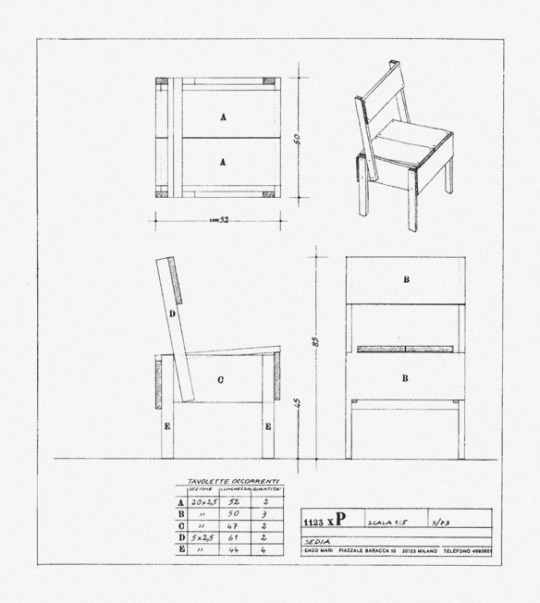
Enzo Mari for the West African asylum seekers working at CUCULA, the Refugees Company for Crafts and Design in Berlin, 2018
«The 19 ‘do-it-yourself’ furniture designs, which the Italian Designer Enzo Mari published in his book ‘Autoprogettazione’ in 1974, marks a milestone in the contemporary design history. Positioned in contrast to the formalism at the time, Enzo Mari suggests the democratisation of design and creating a provoking alternative to the capitalist paradigm of mass consumption. Building your own furniture, when required, that’s the idea.40 years later, Enzo Mari grants the team of CUCULA the rights to use his designs, to build and further develop his furniture. This is how in the CUCULA manufacture, Enzo Mari’s ideas meet the ideas of young refugees, now engaging with their personal stories to form new perspectives. Enzo Mari’s plans, irrespective of language barriers, present an opportunity to build high quality, sustainable and beautiful furniture with simple tools and little know-how when it comes to carpentry. By doing so, a process of learning and reflection develops, which calls on the individual creative power. In this creative argument, the design classics meet with the stories of their builder. Design as a performative force, which develops with those stories, to develop a new identity. Design becomes intimately connected with sustainability and social responsibility.» – CUCULA, Refugees Company for Crafts and Design
«Design has something to do with utopia... I want to create models for a different society.» – Enzo Mari
(images: Enzo Mari, Autoprogettazione?, Corraini Edizioni, Mantova, 2017)
155 notes
·
View notes
Text

(art by @.cherrytrolls & design by @.indig0trolls!!!!)
> Your name is Skotti Cucula, and you’re taking a water break. How nice of you to sit with us while we say hello!
> You’re mighty tall, ain’tcha? Your size and strength make you the perfect 8-Man for your rugby team! When you were forced to quit your degree, you turned towards professional sports. You’re known for being a real sweetheart, even if you aren’t always the sharpest. You’re a really peaceful troll!!! ...that is, until they look at your loved ones wrong. There is a reason you got kicked out of higher education, after all.
> Oh? Heading back to the field so soon? Maybe if we’re lucky, we’ll catch you on your next break!
==> Skotti Cucula is now open for asks & interaction.
6 notes
·
View notes
Video
Primo giorno dell’ultimo blocco.
guarda,capisci,taglia,incolla,avvita,scartavetra,colora.
#manymani#fondazionepistoletto#mattiapacorizzi#cucula#Cittadellarte#biella#laboratorio#refugees#rifugiati#falegnameria#wood#workshop
1 note
·
View note
Text
Il cuculo è un uccello infame sotto molti punti di vista.
La ragione forse più nota e che depone un singolo uovo nel nido di altri uccelli. Il nascituro provvederà a gettare le altre uova, non ancora schiuse (non che se fossero schiuse si farebbe problemi a gettarvi i nidiacei altrui) giù dal nido. Questo fenomeno è noto come parassitismo di cova, e permette ai cuculi di non occuparsi della prole, per la quale dovrebbero procurarsi cibo specifico, di cui gli adulti non si nutrono, e demandare il compito ad altre specie, solitamente passeriformi.
Un altro motivo, forse meno conosciuto, è che fa un casino boia alle quattro di notte, e potrebbe anche risparmiarselo.
1 note
·
View note
Text
Application to School SOS 21

I applied to this Critical Designers/Artist course. https://www.schoolsos.xyz/
You only had to reply to four questions to apply. Here is what I wrote:
Please select three reference images (not your own work) which looks at issues or themes relevant to yourself and our contemporary society that you may wish to explore during the course. Please supplement each image with a short 100 word description below.:
1.“Autoprogettazione” by Enzo Mari (1974). A book of furniture designs that can be built by anybody anywhere, without specialist skills or tools, out of cheap materials, and without a language barrier. The idea behind this work was a democratisation of design, a counter-proposal to capitalism and mass consumption, where every person can make their own furniture as and when needed. In 2016 Mari granted the refugee support organisation CUCULA the rights to use and develop these designs, allowing for them to continue to address current problems and to yield solutions for the future, such as sustainability, social responsibility and integration. It shows that the world could work differently and follow different systems to achieve empowerment and equalisation of people across classes.
2.Jenny Holzer's Inflammatory Essays (1979–82). A collection of 31 lithographs on colourful paper that show a 100-word essay. The themes range from civil unrest and disquiet to social attacks at (typically) the upper class and capitalist system. Holzer anonymously posted these prints all over New York in 1980. Not only is their content still very relevant today and reading one always makes me feel angry, I think the vehicle Holzer chose to distribute these is not so different from how an anonymous account on Instagram might function. Obviously, she could not have known this at the time but this kind of work both fits into and transcends what we nowadays see as "social media" and suggests a different function and system for how information could be circulated amongst societies.
3.An AI-written script for a short film, a project led by director Oscar Sharp and Ross Goodwin, a New York University AI researcher. Of course, the AI could only learn from human-written film scripts it was given to study, which means that what the AI wrote is ultimately decided by humans, the software simply put something new together out of human pieces that were already there. That AI script was then made into an actual film by humans, thus creating a strange sort of human-AI cycle. I wonder what would happen if AI software were given AI-generated scripts to learn from, then given those scripts to learn from etc. I wonder what the effect on the language and content would be; it would be interesting to see how far it can be pushed before showing significant cracks and (maybe eventually) collapsing in on itself. https://www.theguardian.com/technology/2016/jun/10/artificial-intelligence-screenplay-sunspring-silicon-valley-thomas-middleditch-ai
In no more than 300 words please describe one of your recent projects. Please upload no more than 5 supporting documents below (imagery, video, audio, etc).
Recently I have been splitting my time between my normal uni work, which is mainly screen printing, and my zine Yucky Disgusting. I run and produce it, and my friends submit their work, which I put together along with my own into a book. Each volume has a different theme, the one I'm working on right now is on "Hot Summer". We're open to the regular artwork we all make of course, but also encourage diary-like entries, poetry, lists. photography etc. It started with the fear of not having any way to show our work when we all graduate, so we came up with the idea of a kind of communal studio wall, where everyone can show what they've been doing recently to an understanding and supportive audience. We all enjoyed it so much that it snowballed. We took on a couple of new members and have a weekly meeting about it. My hope is that with a bit of funding and more time (once we all graduate), it can become a well-formatted, exciting, dynamic document that encourages and inspires each of us to stay active and engaged in the art community, as well as starting discussions with other artists and designers that can influence us in our outside or professional practice as well. I have found that I have been making more graphic work as a result, as well as becoming much more interested in more interactive work or ways of engaging with the audience. Because I am a printmaker: Could I design and print a poster to put in the middle of each edition like kid's magazines used to do? Because my friend is an artist writer: could she write a 3 part story that might go in the zine? This is a labour of love that I hope can continue to push us all into a more collaborative, multi-disciplinary practice.
1 note
·
View note
Photo

“Cucula” = etwas verbinden, gemeinsam machen (westafr. Hausa-Sprache)
Berlin I Foto: Verena Bruening I FG
CUCULA - Refugees Company for Crafts and Design
4 notes
·
View notes
Photo

ENZO MARI EDITIONDesign transfer: Enzo Mari and “Autoprogettazione?”
https://www.cucula.org/en/enzomari/
In 1974, the Italian designer Enzo Mari published 19 furniture designs that one could make by oneself in his book ‘Autoprogettazione?’, thereby creating a milestone in the history of design. As an alternative to Formalism and intended as a democratisation of design, with the ‘Autoprogettazione’ programme Enzo Mari created a provocative counter-proposal to the capitalist paradigm of mass consumption. Build furniture yourself, as you need it. That was the idea. Forty years later, he granted the CUCULA team rights to use, recreate, and develop the designs. In the CUCULA workshop, Enzo Mari’s ideas met those of young refugees, who set about creating new perspectives from their own backgrounds.
Enzo Mari’s designs made it possible to produce high quality, durable and beautiful furniture across language barriers with simple tools and little experience in woodworking methods. In this way, the design classics met with the stories of their makers and a process of learning and reflection came into being. Here, the design was directly related to sustainability and social responsibility, and it proved to be performative: shifting itself according to stories and forming a new identity.
The trainees’ work pieces were all based on the furniture designs of the series “Autoprogettazione?” by Enzo Mari.
2 notes
·
View notes
Note
HElloo
Part three of which asteroids i like to check in a solar return chart and why, please?
👣
asteroids i like to check in solar return charts and why (part 3: asteroids that aren't getting more attention than this edition)
:) hello, manon, it only seemed fun and fair to mix this request with a request you made about a year ago that became a series! TIME TO BLEND IT ALL TOGETHER!

armstrong (6469): where your physical efforts are rewarded with monetary and mental gains.
bella (695): where you are the most beautiful AND/OR where you find / are surrounded by beauty.
beowulf (38086): where you are heroic/humble/strong AND/OR where you attract glory.
cancelli (5842): where you need care AND/OR where you need to care for others.
chekhov (2369): where you wish for simple life but experience drama.
cheshirecat (6042): where you make false assumptions AND/OR where you frustrate those around you.
constantia (315): where you need routine.
cucula (2731): where you make a lot of the same mistakes.
educatio (2440): where you appear to be the most knowledgeable.
eureka (5261): where you make a life altering discovery.
fay (4820): the possibility for air travel this year.
hehe (200002): where/how you can find harmony in your life.
isolda (211): where you may have an identity crisis AND/OR where you are hopelessly obsessed with others (sign can indicate who).
jubilatrix (652): where you make light of life when all seems hopeless.
kafka (3412): where you doubt yourself AND/OR your anxiety/dread about life.
karma (3811): where you should pay it forward to gain maximum benefits.
lova (868): where you experience devotion AND/OR where you could meet your next romantic partner.
madhatter (6735): where you tend to drive people away AND/OR where you are constantly worried or stressed to the point of madness.
nostalgia (3162): where you may have some deja vú or past memories arise.
ortrud (551): where you are wrong about everything.
ovidius (2800): where you inspire others but are isolated from them as well.
plato (5451): where your beliefs rule your reality.
santa (1288): where you experience child-like joy AND/OR where you need to remember how lucky you are as well as where to remain grateful for what you have.
tardis (3325): where you have the opportunity to go anywhere.
whiterabbit (17942): where you are constantly late or anxious, where you pique others' curiosity, AND/OR where you should follow a sign to discover an extraordinary opportunity.

like what you read? leave a tip and state what post it is for! please use my "suggest a post topic" button if you want to see a specific post or mythical asteroid next!
click here for the masterlist
click here for more return chart posts
click here for more asteroids that aren't getting more attention than this
want a personal reading? click here to check out my reading options and prices!
© a-d-nox 2023 all rights reserved
#astrology#astro community#astro chart#asteroid astrology#astro placements#asteroid#solar return#solar return observations#astrology tumblr#astroblr#astrology notes#astro content#astro posts#astro notes#astrology observations#astrological help
300 notes
·
View notes
Photo
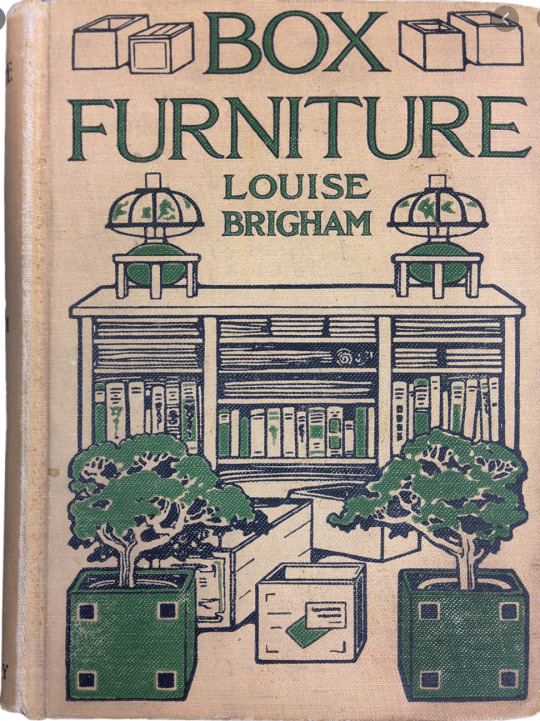
Louise Brigham | 7. Sustainable, inclusive and socially responsible, Louise Brigham’s work in transforming wooden crates and other unwanted materials into useful and affordable furniture for people who desperately needed it in the early 1900s, chimes neatly with key concerns of design today. The same can be said for the care and ingenuity with which Brigham devised ways of teaching design and making to impecunious young New Yorkers and helping unskilled workers to find stable employment. Her concept of making furniture from unwanted wooden crates set a precedent for subsequent work by designers as Gerrit Rietveld with his 1934 Crate chair and Enzo Mari’s 1974 self-assembly Autoprogettazione furniture. (Here’s Mari’s furniture being made at CUCULA, a Berlin workshop dedicated to a Brighamesque mission to empower refugees by helping them to learn design and making skills.) Why has such a dynamic and prescient a designer as Brigham been forgotten? Gender is an obvious explanation. Tough though it is for female designers today, it was far worse for the women of her era. Another reason is the independent, politically motivated nature of Brigham’s work. Almost all the furniture designers who have achieved lasting fame benefited from the support of powerful manufacturers with vested interests in sustaining their post-humous reputations. But Brigham never sought to commercialise her designs. She would not have been able to make that choice, or to have achieved as much as she did, without the financial support of her wealthy family. In that respect, she was in a similar situation to the slightly younger Irish-born architect and designer, Eileen Gray. Both women also benefited from being unmarried at the start of their design careers, and therefore free to focus on their work. Tellingly Brigham devoted considerably less time to it after marrying a Cleveland industrialist, Henry Chisholm, in 1916 when she was 41. Time to celebrate the remarkable Louise Brigham and her ingenious Box Furniture.
Louise Brigham | 5. “To all who care for simplicity and thrift, utility and beauty, I send my message,” wrote Louise Brigham at the beginning of her book, Box Furniture: How to Make Useful Articles for the Home. Published by The Century Co. in 1909, the book ran to a hundred pages, in which Brigham explained how to make desks, cabinets, stools, tables and chairs from discarded wooden packing crates and other found materials. Each of them was designed for use in compact spaces and to be as versatile as possible. Trestle tables were particular favourites. She described each stage of the fabrication process in detail, even suggesting which type of boxes were likeliest to yield the sturdiest wood, such as crates for canned fruit and pulses. Brigham’s text was illustrated by drawings and diagrams make by a young painter and interior designer Edward Aschermann, who she had befriended in Vienna. Aschermann hailed from Milwaukee, but had worked in the Viennese studio of Brigham’s design hero, Josef Hoffmann. Aschermann’s clear and precise yet gentle drawings helped to ensure that Brigham’s design templates were as clear and precise as possible, while humanising what might otherwise have seemed like a dry instructional book. He also depicted her designs in interiors like this nursery, in which both the room and her furniture looked distinctly like Hoffmann’s. Box Furniture proved so popular that it was translated into German and Danish, and had to be reprinted. It was snapped up by schools and libraries as well as the impecunious individuals who Brigham was particularly eager to help.
Design and Standardisation | 1. No one would have considered it odd when Louise Brigham left the US in 1905 to travel around Europe. She was unusually passionate about social issues, the housing crisis especially, but such trips were popular among wealthy young women, and Brigham’s plan to study Europe's rich history of hand craftsmanship sounded eminently respectable. Yet her family and friends would not have expected her to spend not one but two summers on a remote coal mining camp on the Norwegian island of Spitsbergen, above the Arctic Circle. Nor would they have thought that Brigham would conduct a design experiment there by converting the empty wooden crates used to ship food and other supplies to the island into furniture. Brigham wrote a book on her experiments, Box Furniture, which was published in 1909. It included standardised design templates for chairs, tables, cabinets and other types of furniture, like this desk, together with instructions as to how to make them using basic tools and carpentry techniques from found materials, like the wood from packing crates. Brigham's objectives were to enable working class families to furnish their homes inexpensively, and to create new jobs for unskilled workers, who could be taught how to make her standardised designs with rudimentary training
1 note
·
View note
Text
Federico Tear
FMP proposal
I would like to build an instrument that utilises the same premise as Enzo Mari’s Autoprogettazione which is an instruction manual on how to produce simple furniture out of just nails and wooden planks. I will produce an instrument for example a guitar, this will have an accompanying set of instructions that I will produce while working, being that I am a complete beginner this manual will be crude and the entire project is a large experiment completely out of my comfort zone.
The project is not outcome based but is more focused on recording and documenting working processes. For this project to be useful in the same way as Autoprogettazione it will need to be very low cost so sourcing cheap or free wood will be an important goal and cutting any non essential components will be key.i will also be utilising a closely linked theory, cradle to cradle is a system through the reuse of existing materials and its practicality when applied to real objects.
I am interested in building guitars in a professional context. to produce my own step by step instructions I will try and integrate some new technology by using online platforms as a method of distributing the step by step instructions of how to build a sustainable cheap guitar using as fewer tools as possible
I am Researching how to change guitar building from a complex art into an easy step by step and how this can be achieved in an ecologically minded way extending the life span of existing materials and parts.
Audience this is for the public for anyone who lacks the artistic skills to produce a guitar or people who lack the machinery and resources. It aims to target anyone interested in ecological minded construction. Instrument building being synonymous with the consumption of forest woods and rare woods
Consulting me with my project is Mo Clifton a london Based luthier building instruments from the 1980’s also consulting with me are several workshop technicians that have experience in building instruments and vast understanding of machinery also will be advising me on the project
https://www.dezeen.com/2015/11/16/enzo-mari-autoprogettazione-furniture-reproduction-berlin-refugee-organisation-cucula-humanitarian-design/
https://epea-hamburg.com/cradle-to-cradle/
0 notes
Photo
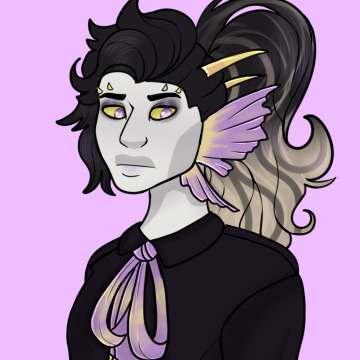


Mmmm Bios......
Ithida | Skotti !!! | Boe
5 notes
·
View notes
Text
1° Post !
La nostra avventura inizia qui !
Maggiori info su questa pagina .
bye
1 note
·
View note
